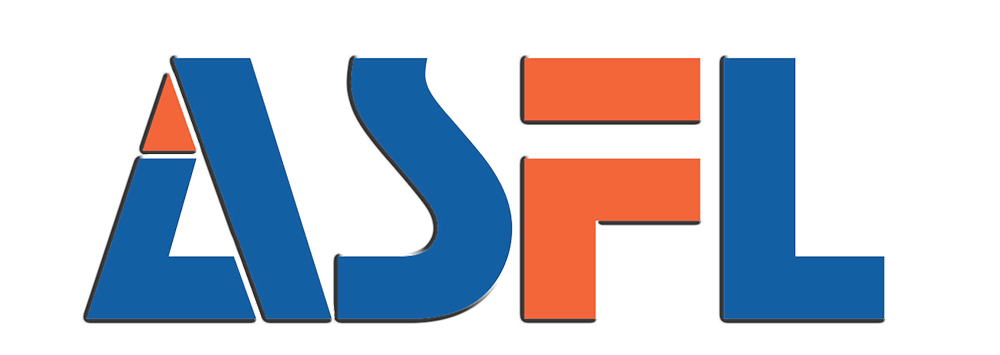Routine Maintenance Practices for Soft Drink Filling Equipment
Daily Cleaning Protocols for Liquid Bottle Filling Machines
Hygienic design is a top priority in beverage production with regards to health regulations and consumer safety. One key daily task is washing the liquid bottle filling machine. Recommended cleaning agents: - Hot water and detergent machine wash or soak with an approved sanitiser to remove any residue and to prevent contamination. Dirty little past that can result in the machine's breakdown involve mild through to dangerous microorganisms which will cause the device to fail. A sterilized filler improves the quality of the product and increases the drinks shelf life by removing any risk of contamination.
Lubrication Requirements for Filling and Capping Components
Regular maintenance and greasing of fill and capping assemblies is crucial in minimizing wear and maximizing performance. Food-grade lubricants are required for these machines to prevent contamination, and these lubricants have to be able to meet the demands of high-speed operation. Regular lubrication is key; Plan lubrication weekly and more often, depending on the frequency of use. If there isnt enough lubrication, youll have higher friction which results in parts wearing quicker along with the risk of broken mechanical components or excessive downtime.
Calibration Checks for Automatic Liquid Filling Systems
Regular calibration verification is key when it comes to the precision of automatic liquid fillers. These tests guarantee perfect fills, preventing waste and maximising the quality of your product. Calibration Calibration is checking or adjusting the dispensing units to conform to pre-set measurement values. The steps involve establishing a baseline for fill levels, testing the machines under a range of circumstances and making adjustments. Inappropriate fills result in monetary losses due to overfills or underfills and create the potential to harm a brandâs reputation when customer expectations are unfulfilled.
Common Issues in Soft Drink Filling Lines
Inconsistent Fill Levels: Causes and Solutions
Inequitable filling quantities in liquid lines are generally attributable to machine malfunction and/or incorrect machine adjustments. Such differences might arise from gas bubbles in the circuit, lack of proper calibration or malfunctioning of the flow meters. Regular monitoring and calibration are important to mitigate these issues. There are improvements to be made, such as making corrections for systems that contain any air bubbles, checking the flow meters for accuracy that can greatly improve the consistency. Industry data shows fill level variation may hamper production efficiency up to 30%, suggesting that measures to be proactive rather than reactive are critical in ensuring production runs well.
Leakage Problems in Carbonated Beverage Fillers
Leaking carbonated beverage fillers are a popular problem and can have huge effects on productivity and the loss of good product and cross contamination. Frequent causes include worn seals, loose connections and cracked tubing. Wear and tear can be identified and helped with regular maintenance and inspection, which can help prevent these from occurring. Regular inspections and replacing worn-out parts are known to help prevent leaks. A major beverage maker's case study has revealed that its production efficiency increased by 20% when the company began closely managing leaks, so tracking must go on.
Nozzle Blockages in High-Viscosity Liquid Filling
Blockages of the nozzle are a major problem in the operation of the filling of high viscosity fluids and arrest the production. These obstructions are typically caused by viscous medium such as a syrup or an oil blocking the nozzles. Preventive measures can involve choosing the nozzle according to the viscosity of the liquid, as well as cleaning any build-up regularly. Selecting the nozzle style and following a cleaning timetable can help minimize blockage, and less blockage means fewer production slow downs. It’s recommended that thicker e-liquids should only be used in nozzles that have been tailored to suit thicker e-liquids as it will help to prevent clogging and will make for an easier vaping experience.
Advanced Troubleshooting Techniques
Diagnosing Electrical Failures in Automated Filling Systems
Electrical breakdowns may lower the efficiency of automated filling machines and will decrease the overall productivity. Typical problems are defective wiring, too many circuits on one panel, or lack of powers. To begin diagnosing the problem, you can examine the wiring and look for visible wear or disconnection. Second, ensure the power supply is the size required for the system to avoid overloads. Compliance with industry electric safety standards promulgated by OSHA are key during the maintenance phase so that further problems do not arise. Referring to these standards at regular intervals will ensure that the troubleshooting process remains safe and effective.
Resolving Conveyor Misalignment in Packaging Lines
Misalignment of conveyors is a common problem in packaging lines that can slow production by jamming or changing the flow pattern. Misalignment is usually recognised by monitoring the performance of the conveyor and knowing if anything is wrong. When this happens, it is possible to get the belts back in track by ad justing the rollers or frames. Frequent checkup steps such as scheduled inspection and service can bring about no repeating situation. With these procedures in place businesses can ensure maximum productivity and also not face expensive production stoppages in the packaging process.
Addressing Sensor Malfunctions in Modern Filling Equipment
Today's filling equipment is equipped with sensors that play a critical role in the accuracy of the operation, but sensor malfunctions such as false readings or complete failure can bring the production to a standstill. That changes when sensors don’t measure fill levels correctly, so the fill levels become inconsistent in the bottles. In order to eliminate these problems in a systematic way, it is important to periodically check the functionality of the sensors and replace them in a timely manner if they are damaged. The solution to this challenge is often to upgrade to more stable sensor models and to implement preventive measures. Across industries, we’ve seen that preventative maintenance, alongside investing in quality equipment, means that sensors fail less often and operations flow with less resistance.
Preventive Maintenance Strategies
Monthly Inspection Checklists for Filling-Capping Combos
Monthly inspection checklist How to ensure your filling-capping machine is working at its best. These check lists usually include looking at vital equipment such as the liquid bottle filling machine for wear and tear. Our routine inspections help us identify potential problems before they become expensive repairs. Check fill levels, capping torque and seals to drive uptime by keeping the system operating smoothly. Weapons: But by following these monthly inspection routines, companies can actually extend the life of their machines. Industry lists can be a helpful tool, and routine specifics like valve calibrations and conveyor alignments are included as a regular inspection item.
Seasonal Maintenance for Temperature-Sensitive Components
Because the reliability of equipment is important, keeping an eye on temperature-sensitive parts is crucial. Such items, located in positions of a filling capping machine, etc., are likely to undergo failure if not managed well, especially due to seasonal changes in temperature. Regular seasonal maintenance – including checking thermostats and insulation – can help to reduce these risks. Best industry practice also indicates the temperature controls should be calibrated periodically to avoid hiccups during operation. Structured maintenance plan can be discussed at the onset, so that these machines stay operational and downtimes are minimal.
Software Updates for Smart Filling Line Controllers
It is important to have smart filling line controllers with software that can be updated to keep the system efficient. Such updates may contain enhancements and bug fixes that improve the machineâs error sensing capabilities, liquid-filling line processing, and provision for automatic execution of repetitive tasks. You may require updates if any of the following indicators are present: slow performance or unforeseen error messages. And keeping your systems up to date with the latest software eliminates wasted time and energy – and extends the systems' useful life. 4) With these regular updates, companies make sure their smart filling never stops, never suffers and never breaks the production circle.
Case Study: Optimizing Reliability in Carbonated Beverage Production
Pepsi's Spare Parts Standardization Success Story
Pepsi’s move to standardized spare parts significantly transformed the way its bottling plants were run. In the past, multiple sensors and drives caused stock issues and downtime and was more expensive. With all of its sensors standardized to only one brand and from several hundred drives down to 14, Pepsi was able to achieve much greater efficiency. This strategic decision would not only make it easier for employees to develop their expertise, but also better equipment reliability. For example, within a short period, the standardization resulted in an 8% increase in line efficiency and a decrease of 66% in sensor inventory, which meant that Pepsi could use its resources for other strategic areas of production.
Downtime Reduction Through Predictive Maintenance
The preventive plan maintenance plays an important role on downtime reduction in beverage production process. Leveraging sophisticated monitoring and analytics, organizations can anticipate potential machine failures and deal with them long before they materialize. With predictive maintenance, Pepsi reduced its unscheduled downtime, resulting in improved efficiency and cost-saving opportunities. Reports show that companies who have adopted task-based strategies are saving at least 30 to 50% in down times and leading companies such as Coca-Cola have achieved equal success. The early identification and remediation of upsets provide a constantly open production line thereby maximizing throughput and profitability.
Lessons Learned from Industrial Filling Line Overhauls
Bottle and can line rebuilds are complicated but can be divided into four key areas of concern: minimal downtime, cost efficiencies, maintaining ROI, and throughput. From these various case studies it is clear that meticulous planning and follow up are needed to ensure the success of an overhaul. The focus has shifted to involving cross-functional teams to optimize processes, and to use best practices such as phased implementations, so as to prevent a full-line stop at every process. In addition, using modular concepts for filling lines in design makes it easier to update or maintain and also extends the lifetime significantly. Regular training and keeping staff current with new technology were also identified as a best practice, such that staff can effectively operate new systems.





